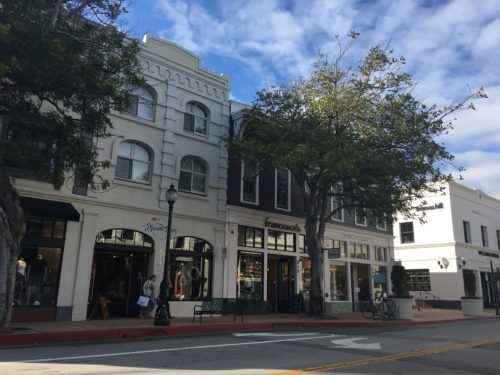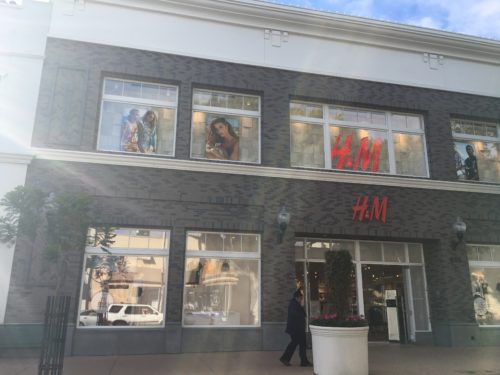At the beginning of the quarter, my group and I set out to write stories we felt would matter to San Luis Obispo residents and the larger community. We thought about the particularities of current San Luis Obispo that the community would care about and asked ourselves internal questions like: What are people’s concerns? What do they want more of? What are they frustrated by?
We answered these questions for ourselves, and each of us agreed that San Luis Obispo’s changing downtown — in terms of its rapid development and introduction of major chains like H&M and Williams & Sonoma — was a potential area in which some of these concerns populated. Monterey Street has been almost entirely transformed over the course of our college careers (the last four years). We also realized we bore witness to a substantial numbers of stores picking up and leaving town, but we didn’t exactly know why.

I wanted to see if this perception seemed universal, at least within San Luis Obispo. Each of us had at least several conversations about San Luis Obispo and it’s ‘changing downtown culture’ but I wanted to know what more students, community members, local business owners, and city officials thought. Are chain stores taking over? Is San Luis Obispo in its first stages of its eventual destruction from the one-of-a-kind, warm, Shangri-La many know it as? Or, was that an unfounded perception? We set out to find out.
Lauren interviewed more than 11 different people—passionate community members, local business owners (including the owner of Forden’s, a local home fireplace shop that decided to move out after 78 years of business in San Luis Obispo), the city’s economic development manager, and the mayor.
“I felt like I was really part of the community while interviewing some of my favorite shops,” broadcast reporter Mariam said. “It was comforting to hear their unique stories and experiences.”
Lauren, who attended a fair number of interviews as well for her multimedia portion said, “It was nice being able to hear from different people in the community that I may not have talked to before this project. Each one of them had something useful to say about their business.”
Capturing the full gamut of perspectives was a priority for us—which meant Lauren’s days were spent interviewing sources back to back—to back.
“I think the hardest part was the research,” Lauren said. ” I interviewed eleven sources and read reports, which was all very time consuming and grueling. But it was cool to get to know the community on a deeper level and hear the very different perspectives on the issue of SLO becoming corporate. Some opinions even surprised me.”
I attended a few of the interviews, and I too, was surprised by some of the stories I heard. After talking separately to Gold Concept co-owner Aaron Gomez and Mee Heng Low Noodle House owner Paul Kwong, it became alarmingly clear that in spite of the frustration many local businesses feel and their resistance to change, they also held a kind of humility and acceptance toward the fate of a city that is larger than themselves—or their businesses.

Kwong talked about the inevitability of so-called expiration dates for cities many hold dear. Originally from Santa Barbara, he moved to San Luis Obispo to get away from a city he felt was losing its character.
Kwong also noted the immense power and influence that Cal Poly has on the city’s decisions—and in this case, on what he calls “Corporation Row”— the stretch of Monterey St. that now contains Lululemon, Williams & Sonoma, Urban Outfitters, H&M, and Mint & Craft. Mayor Heidi Harmon explicitly pointed to this during an interview I had with her over the phone. Harmon said a lot of the chain stores exist because of students.

“I seriously doubt we would have an H&M at all, or certainly an H&M of that size if Cal poly and Cuesta students weren’t shopping there,” she said. “That’s a huge part of their market, I’m assuming, and that’s not to blame students for any part of this problem, but it’s just to remind students that they have a big role to play here, and i would encourage students, in particular, to think about that and know there are essentially voting with their dollars and voting for what city of San Luis is going to be like with their dollars.”